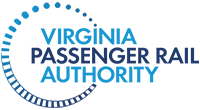WHAT IS THE FRANCONIA TO LORTON THIRD TRACK PROJECT?
The Franconia to Lorton Third Track Project will increase rail capacity for passenger and freight services between Franconia, VA and Lorton, VA by adding a third mainline track along one of the most heavily traveled parts of the rail corridor between Washington, DC and Richmond, VA. This will allow for the separation of passenger and freight trains within the corridor. Additionally, to support future service expansion, some infrastructure will be designed and built to accommodate a future fourth mainline track. These improvements will reduce congestion, increase capacity, and improve the reliability of passenger and freight service in the corridor.
Franconia to Lorton Third Track Project
HOW WILL THE FRANCONIA TO LORTON THIRD TRACK PROJECT BENEFIT ME AND MY COMMUNITY?
This project will:
- Increase capacity to accommodate more passenger rail service and freight rail activity
- Improve reliability of passenger and freight rail services
- Accommodate VDOT’s and Fairfax County’s plan to reconfigure Newington Road with four vehicular lanes and pedestrian facilities (currently 1 vehicle travel lane without pedestrian facilities)
- Improve connectivity between existing multimodal facilities (passenger rail, Metro rail, bus, bicycle, automobile), including improved connectivity to the WMATA bus facility on Cinder Bed Road
- Provide a frequent and dependable alternative to travel on I-95
WHAT WORK IS PROPOSED FOR THE EXISTING RAILROAD BRIDGES WITHIN THE PROJECT LIMITS?
There are two existing bridges over roadways and two existing bridges over waterways within the Project limits. The construction of these bridges is expected to be phased to allow for continuous service throughout the duration of the project. All bridge work will result in widths that accommodate four railroad tracks. The railroad bridge locations within the project limits include:
- Newington Road: The existing two-track railroad bridge will be replaced, and a new double-track railroad bridge will be built adjacent to it.
- Accotink Creek: A new two-track railroad bridge will be constructed adjacent to the existing railroad bridge. No work is proposed for the existing railroad bridge over Accotink Creek.
- Pohick Creek: The existing two-track railroad bridge will be replaced, and a new two-track railroad bridge will be built adjacent to it.
- Lorton Road: A new two-track railroad bridge will be constructed adjacent to the existing railroad bridge. No work is proposed for the existing railroad bridge over Lorton Road.
WHAT IS BEING DONE TO ACCOMMODATE A FUTURE FOURTH TRACK?
The design and construction of an additional fourth track is not part of this project’s current plans or projections due to prohibitive costs and the nature of (VPRA) phased construction plans for other Transforming Rail Virginia projects beyond the Franconia Area Projects. However, the new bridge structures planned for the Franconia to Lorton Third Track project make provisions to accommodate space for a future fourth track.
HOW IS THE FRANCONIA TO LORTON THIRD TRACK PROJECT BEING FUNDED?
The Franconia to Lorton Third Track project is being funded through the collaboration of federal, state, and local contributions. The Federal Railroad Administration, Amtrak, VPRA, Virginia Department of Transportation (VDOT), and Fairfax County have each committed funding for various phases of the project.
Construction
WHEN IS CONSTRUCTION EXPECTED TO OCCUR, AND HOW LONG WILL IT TAKE TO COMPLETE THE PROJECTS?
The construction of these projects will be advanced on similar schedules, which is estimated to begin in 2024 and end in 2027 pending advancement toward final design. VPRA will have more information on this topic at the final design phase, expected in Summer 2024.
WILL THERE BE NIGHT OR WEEKEND WORK?
Weekly work schedules will be determined as the projects advance closer to the start of construction. VPRA will have more information on this topic at the final design phase, expect in Summer 2024. Please see Question 18 for information on how to stay connected and follow the project as it progresses.
HOW WILL THESE PROJECTS IMPACT TRAFFIC, PROPERTY ACCESS, AND EMERGENCY SERVICES DURING CONSTRUCTION?
Construction access routes will be determined the projects advance closer to the start of construction and a contractor is selected. We anticipate having further detail on this topic at the final design stage, expected in Summer 2024.
Residents and emergency personnel will be notified in advance of any roadway closures or detours. Passenger rail service is expected to be maintained throughout construction, and any service adjustments will be communicated by passenger rail service providers (i.e., Amtrak and VRE). Community members and emergency personnel will be able to access amenities and places of work via dedicated detour routes if necessary.
Movement of construction vehicles and transport of construction materials will occur on local roadways and is not anticipated to cause any type of major disruption.
Environmental Concerns
WILL THESE PROJECTS HAVE AN IMPACT ON THE ENVIRONMENT?
VPRA is working with the U.S. Army Corp of Engineers, U.S. Fish and Wildlife Service, Virginia Department of Environmental Quality, and other regulatory agencies to assess environmental impacts. There are currently no known significant adverse environmental impacts in the project areas. VPRA will obtain the appropriate permits before performing any work and will minimize disturbance to the surrounding areas where feasible. All land use temporarily affected by construction activities will be returned to its original use after construction is complete.
WHAT MITIGATION EFFORTS ARE IN PLACE TO REDUCE ENVIRONMENTAL IMPACTS?
VPRA will make every effort to avoid and minimize the environmental impacts of the rail improvement projects. Where impacts cannot be avoided, VPRA will apply appropriate mitigation measures as required by local, state, and federal regulatory agencies. VPRA will take steps to mitigate environmental impacts, including, but not limited to, the following:
- Wetland and stream impacts
- Floodplain impacts
- Noise and vibration impacts
- Air quality impacts

